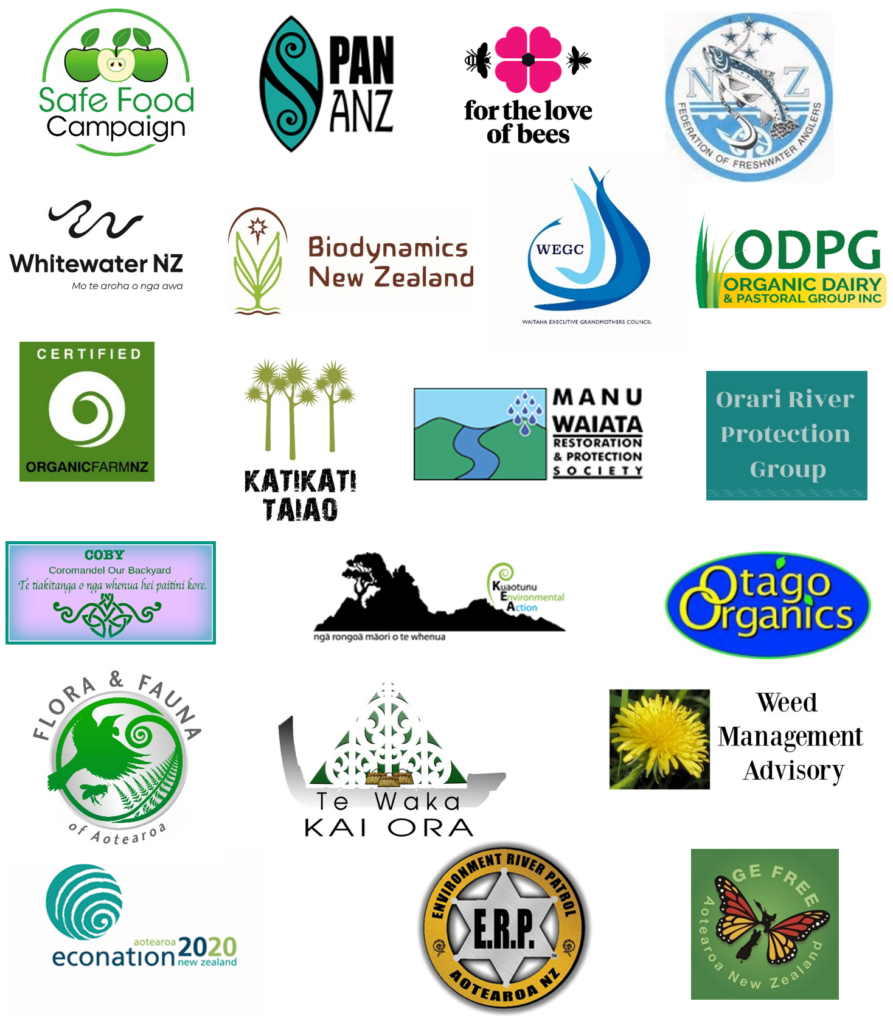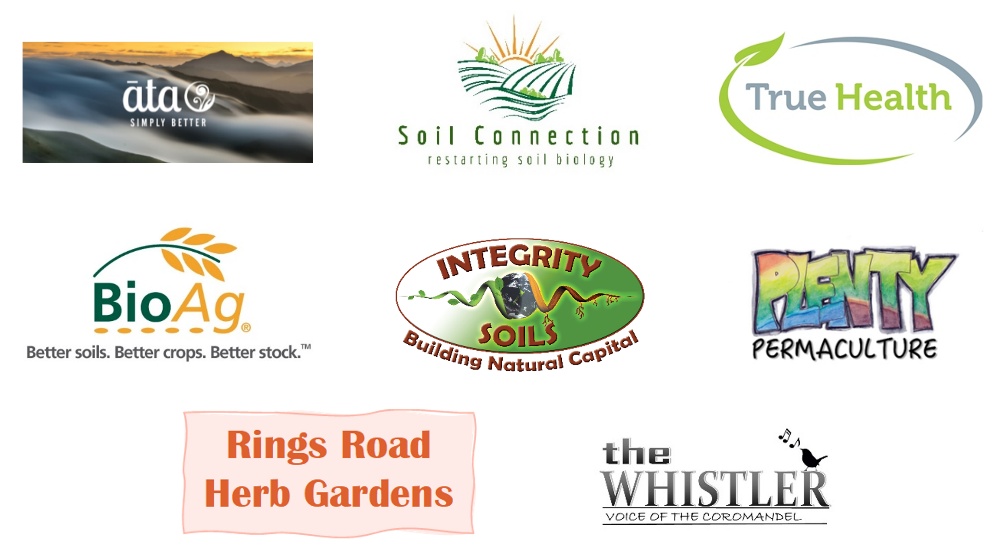Aotearoa New Zealand | Policy Proposals on healthy waterways: Are they fit for purpose?
Excellent water quality is of paramount importance for our Treaty obligations, agriculture, tourism industry, health and sense of national identity. In September 2019 the Ministry for the Environment released its proposals for dealing with the crisis in our freshwater: Action for healthy waterways. While the document outlines possible ways of ‘reducing soil loss, reducing nutrient run-off, and/or investing in upgrading wastewater and stormwater infrastructure’, there is one glaring omission – it does not address the need to monitor synthetic chemicals in our waterways.
New Zealand has chemicals in our waterways that are banned in Europe. Policy-makers tend to assume toxic chemicals assimilate into the environment. However, it is clear from global and local data that the pressures from ongoing diffuse sources (agricultural, industrial and household and pharmaceutical) exceed the capacity for the environment to disperse and degrade them. The only way to understand the pollution profile is, as the OECD recommends, to (1) commence transparent, centrally driven monitoring that seeks to comprehensively capture chemical pressures that will differ by region. (2) Then make the data public, so that citizens and scientists can access the data, and then (3) Civil society can debate the degree to which regulation (or not) is required in order to safeguard the life-supporting capacity of our freshwater (See Sn 5 of the RMA).
The Soil and Health Association and Physicians and Scientists for Global Responsibility (NZ) jointly produced a detailed submission to respond to the September discussion document. Twenty-one NGOs supported our submission document, and eight private organisations also requested to join, including major players in the regenerative agriculture movement. Surprisingly, this was not picked up by mainstream media. Chapter 10 of our publication outlines suggestions for reform. We also produced a summary paper.
Chemical production is predicted to increase exponentially, constituting a present and growing threat to human and environmental health, and risking the wellbeing of future generations. Chemical contaminants include pesticides, household products, resins, plastics, petroleum products, pharmaceuticals and personal care products. Currently, routine national monitoring for chemical contaminants in New Zealand freshwater that is publicly accessible, is confined to groundwater. While laudable, this is not sufficiently protective of public or environmental health.
Polluting synthetic chemical contaminants create intersecting social, cultural and economic harms. Without a mandate to monitor chemical contaminants in waterways as well as aquifers, territorial and national authorities will not have the capacity to safeguard:
- The quality of our drinking water;
- Māori customary fishing and traditional riverside food gathering;
- Favourite Kiwi swimming areas;
- Key tourist destinations as safe and ecologically healthy;
- Food production and processing, and organic systems from contamination.

Excluding diffuse chemical contaminants from monitoring and regulation additionally leaves Māori without appropriate scientific resourcing to assert rangatiratanga and kaitiakitanga. We will be unable to protect biodiversity and our food chains, reverse declining fish populations and ensure that our agricultural exports are not inadvertently contaminated. And the possibility of endocrine disruption puts at risk our most vulnerable citizens – our babies.
Diffuse synthetic chemical emissions must be urgently addressed at a central government level. Chemicals accumulate, they can interact together additively and/or synergistically and be much more harmful to environmental organisms, and humans – than exposure to a single chemical. It’s an interesting fact that all vertebrates – from frogs to fish to humans, are similarly vulnerable to endocrine disrupting chemicals. For endocrine disrupting, carcinogenic and/or mutagenic substances, it is increasingly clear that there can be no ‘end-point’ – no degree of exposure that can be claimed to be safe. Our paper discusses this in depth, drawing on extensive references to support our discussion.
The solution is not to stick our heads in the sand, because it is not politically comfortable, nor convenient. Nor is it acceptable to wait for certainty – until scientific endpoints are established. It is evident, for many endocrine disruptors, that it may not be possible to establish endpoints because of the miniscule levels at which these chemicals cause harm, and because of the varying vulnerability at different life stages.
In such an environment, there remain many opportunities to ensure policy and regulation concerning freshwater are fit for purpose and can reasonably meet the foreseeable needs of future generations.
Reform Recommendations
- Where degraded areas are identified, scientists can utilise a suite of nationally regulated testing screens for diffuse chemical contaminants and publish this information for public debate.
- New Zealand can resource scientist experts in chemical toxicology, endocrinology and environmental chemistry and build on international research to innovatively evaluate the risk to both aquatic food chains and human health – at arms-length from industry.
- Our chemical risk assessment can adopt best practice alongside Europe, sending a firm message to trading partners and tourist operators that freshwater and food in Aotearoa is clean and safe.
- We can update regulations to recognise additional risk from chemical mixtures; and the risk from exposures at low levels that impacts the hormone system and can set the stage for disease and dysfunction.
- New Zealand can appropriately engage the precautionary principle as the key policy instrument that over-arches risk evaluation, rather than retaining it where it currently sits in legislation and policy, alongside social, cultural and economic considerations where it is
rarely called upon, and frequently ignored.
We recommend that the monitoring of diffuse chemical pollutants in our fresh water is required as a national environment standard and that the recommendations for reform in this paper are included in any policy on protecting the quality of our fresh water.
Freshwater 2020 – Scope continues to exclude diffuse chemicals
Proposed National Environmental Standards for Freshwater continue to exclude the cumulative risk of environmental synthetic chemicals from national documentation and discussion. Environmental indicators ignore diffuse pollution from urban, agricultural and industrial sources.
The Soil and Health Association, PSGR and our co-signatories joined many individuals and organisations in submitting to the September 2019 the Action for healthy waterways.
A record number of individuals and organisations submitted to the Ministry for the Environment– 17,500. The Summary of Submissions reveals that urban, agricultural and industrial synthetic chemical pollution was not an item of concern to the general public.
Inconsistent approach to chemical pollutants
In February 2020 the Report of the Freshwater Independent Advisory Panel was released.
– It did not mention synthetic chemicals, pesticides, or trace (heavy) metals.
In April 2020 the Our Freshwater 2020 was released by the Ministry for the Environment and StatsNZ.
– It did mention synthetic chemicals, pesticides, or trace (heavy) metals were a substantial problem.
In May 2020 National Environmental Standards for Freshwater and the National Policy Statement for Freshwater Management were released. They were accompanied by a Cabinet paper which was the key document for seeking agreement to an action for the healthy water ways package. They files also included regulatory impact analyses and appendices.
– None of these documents nor appendices mentioned synthetic chemicals, pesticides, or trace (heavy) metals.
Of the files released in May 2020, Appendix 7 contained the Summary of Submissions from 17,500 individuals who joined others in submitting to the national direction for our freshwater. This, it appears, was one of the primary documents informing the Cabinet paper.
However, it appears that not many, if any submitters were interested in the potential for synthetic chemicals, pesticides and trace metals to pollute New Zealand waterways.
As a result in the 190 page Summary of Submissions there was only one mention of synthetic chemicals: ‘Submitters also mention contamination of drinking water from other chemicals (including emerging contaminants), microbes and waste’ (page 173). Trace metals and pesticides were not mentioned.
This 2019-2020 process was largely a result of the failure of an earlier process which produced the National Policy Statement for Freshwater Management 2014 (amended 2017). This earlier process was criticised for its weak approach to nutrient (nitrogen) management.
Following the release of the 2020 suite of papers, the nitrogen level recommended in the Cabinet paper was also criticised for not following the bottom line recommendation of 1mg/L dissolved inorganic nitrogen level recommended by the Science and Technical Advisory Group who were invited to advise the Ministry for the Environment.
Therefore the Freshwater process managed by the Ministry for the Environment continues to fail to produce fit for purpose national standards that can assure that our freshwater will be safe for not only river life, but for human health for future generations.
The October 2019 submission to the Ministry for the Environment Aotearoa New Zealand Action for healthy waterways has been kindly supported by the following NGOs:
- Safe Food Campaign
- Pesticide Action Network Aotearoa New Zealand
- For the Love of Bees
- Federation of Freshwater Anglers
- Whitewater NZ
- Biodynamics New Zealand
- Waitaha Executive Grandmothers Council
- Organic Dairy and Pastoral Group Inc
- Te Waka Kai Ora – Maori Organics Aotearoa
- Organic Farm New Zealand
- Katikati Taiao
- Manu Waiata Restoration and Protection Society
- Orari River Protection Group
- COBY – Coromandel Our Backyard
- Te Waka Kai Ora – Maori Organics Aotearoa
- ERP – Environment River Patrol Aotearoa
- KEA – Kuaotunu Environmental Action
- Weed Management Advisory Auckland
- GE Free Aotearoa New Zealand
- Econation 2020 Aotearoa New Zealand
- Otago Organics
And these Private Sector Organisations:
- Āta
- Soil Connection
- True Health
- BioAg
- Integrity Soils
- Plenty Permaculture
- Rings Road Herb Gardens
- The Whistler


